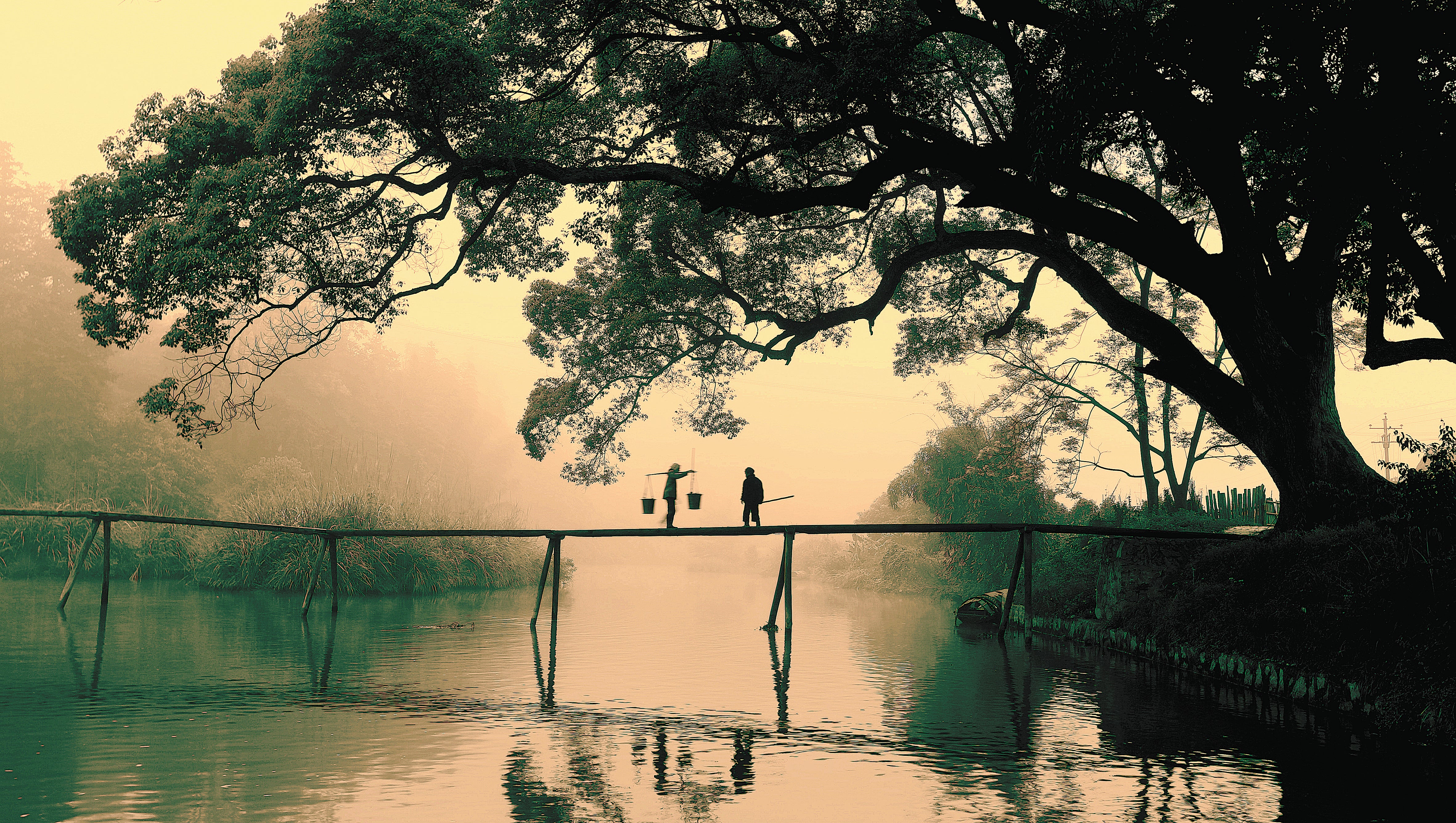Photographer preserves world that is ebbing away
THE ARTICLES ON THESE PAGES ARE PRODUCED BY CHINA DAILY, WHICH TAKES SOLE RESPONSIBILITY FOR THE CONTENTS

Tan Jianhua has trekked to more than 800 ancient villages over the past 15 years, an odyssey made all the more difficult by his carrying a heavy bag every step of the way.
The bag is the key to the endeavour. It contains kit that has enabled him to take 100,000 photographs on his journey that have captured the natural landscape, distinctive architecture, folk customs and historical landmarks of the hidden rural jewels that are scattered across Central China’s Hunan province.
Some of the scenery captured by Tan’s lens has since vanished, giving his work an unexpected historical value, experts say.
Tan, in his early 70s, was a professional photographer for the Chinese and Overseas Architecture journal in the provincial capital, Changsha.
Despite being well-versed in the various styles, schools and theories of architectural design, it was not until Tan was in the home stretch of his career at the journal that he realised the most beautiful rural structures were those that had been around him throughout his early years.
“The bridges, running water and houses, just like those in a drama from the Yuan Dynasty (1271-1368), are all a picture,” Tan says.
Some ancient architecture in the south and east of Hunan features horse-head walls, and a row of rooms anchored by a central space, while those in the west are mostly wood structures with ethnic Tujia, Miao and Dong elements.
As Tan realised that rapid urbanisation was eating into the space of many rural structures, an urge rose in him to keep a record of the ancient villages, especially on the brink of change incurred by modern development.
In 2006 Tan decided to explore, find and record such villages, through his lens, in the depths of the mountains.
“They have a poetic aesthetic and are a concrete image of Hunan culture,” Tan says.
“Photography can accentuate this, and retain the beauty of Chinese culture that has been inherited for thousands of years.”
Tan also did his part to call attention to the preservation of rural buildings.
During a trip to Ningyuan county in the south of Hunan, in 2010, Tan wasted no time in pointing out a big crack in the wall of an old building to local authorities.
“I told them it would fall to pieces if restoration work was not carried out, which would be a great pity,” Tan says. “When I came back a few years later, the crack was fixed.”
The building has become a provincial cultural relic for its characteristics, which are typical of rural households that engaged in small-scale farming work in southern China.
Another vital element of Tan’s work is taking portraits of villagers in old age. He found that many senior people are in need of a photo for their funerals, so he makes a point of asking village officials to invite the elderly, usually those aged 80 or above, to get a free portrait photo.
In Tan’s opinion, the human element is an indispensable part of rural beauty, in addition to the natural landscape.
He still vividly remembers a scene in which elderly villagers would smoke tobacco from a long-stemmed pipe around a fire pit during winter in Suining county in the central area of Hunan. “It was a magical sight, but many of the elderly are now gone,” Tan says.
“Things like that are disappearing too fast, and are inimitable and extremely valuable.”
He needs to act more quickly in the fight against time to create more photos, words and films, he says.
Recently, a selection of Tan’s work has been on display at the Cradle of HunanSoul exhibition in Changsha. The show presents more than 130 works that include Tan’s photography, as well as calligraphy and paintings by other local artists, and will run until mid-September.
Li Xiaoqian, 32, a visitor, was impressed by Tan’s work when she went to see the exhibition with her sister at the end of July.
“I want to visit these villages after seeing them in the photographs,” the Changsha resident said.
Subscribe to Independent Premium to bookmark this article
Want to bookmark your favourite articles and stories to read or reference later? Start your Independent Premium subscription today.